Are Planks or Crunches Better for a Solid Core? Fitness Pros Set the Record Straight
We're settling the debate once and for all.
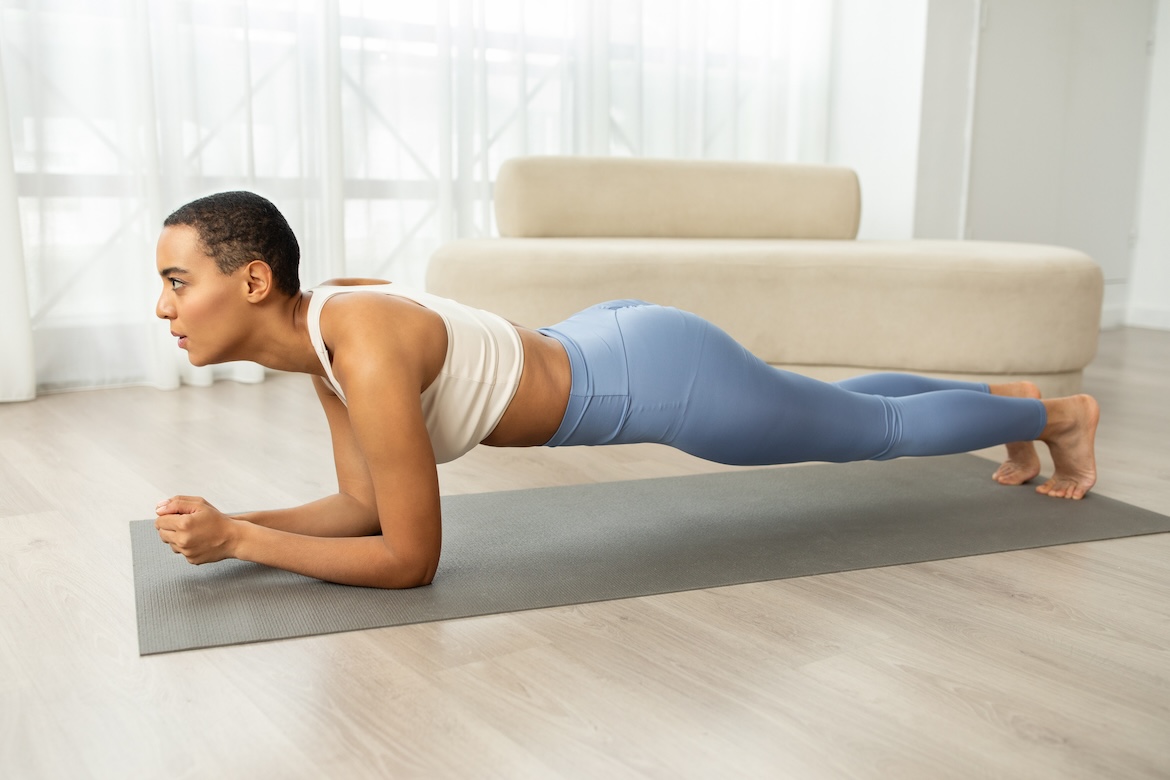
When it comes to strengthening your midsection, crunches and planks are considered the holy grail. However, these exercises target your muscles differently, and there are pros and cons to each.
Here’s how to properly do both of these exercises, plus what you should consider when incorporating each into your routine.
Crunches
A traditional go-to for ab workouts, crunches contract your abdomen to effectively build muscle.
“This exercise targets the abdominal muscles specifically, allowing for the development of a defined ‘six-pack’ through bodyweight resistance—which can be increased with weights,” says Stan Kravchenko, NASM-CPT, a personal trainer and founder of OneFit.com.
How to do it
Here’s how to properly perform a crunch, according to Kravchenko:
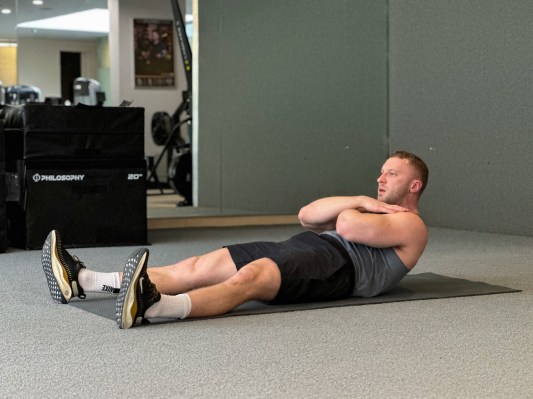
- Begin by lying on your back with your feet flat on the ground, shoulder-width apart. Place your hands across your chest. Engage your core by drawing your belly button toward your spine.
- Exhale as you lift your upper body (head, neck, and shoulder blades) off the ground, crunching inward. The movement should be slow and controlled: Focus on engaging your abdominal muscles without relying on momentum or straining your lower back. Keep your neck relaxed, using your core to lift.
- Once your shoulder blades are off the ground, hold the position for one second, ensuring your lower back remains in contact with the ground to avoid strain.
- Slowly lower yourself back to the starting position while inhaling. Maintain smooth and controlled movements throughout.
Adjust your reps and sets based on your level.
- Beginner: One to two sets; six to eight reps each
- Intermediate: Three sets; nine to 15 reps each
- Advanced: Four sets; 16 to 20 reps each
Muscles worked
A crunch largely focuses on the abdominal muscles, engaging fewer muscle groups than a plank.
“The crunch is less complicated than a plank,” says John Bauer, ISSA-CPT, a personal trainer and content developer at the International Sports Sciences Association. “When done correctly, there will only be a small amount of spinal flexion that occurs.”
These are the muscles that are worked during a crunch, according to Bauer.
- Rectus abdominis: This is the primary muscle involved in a crunch. It runs vertically along the front of your abdomen and is responsible for flexing your spine.
- Internal and external obliques: These muscles are located on the sides of your abdomen and assist in trunk flexion, along with trunk rotation and side bending. They contribute to the twisting motion often associated with crunch variations.
- Transverse abdominis: This deep-lying muscle wraps around the abdomen and acts as a stabilizer, providing support and compression to your abdominal cavity during the crunch.
Pros
The most obvious perk of crunches is their ability to strengthen your abdominal muscles.
“Crunches specifically target the rectus abdominis muscles, helping to strengthen and tone the front of your abdomen,” Bauer says. “This can improve overall core stability and support spinal alignment.”
You can also mix up crunches with several different variations, such as bicycle crunches, stability ball crunches, and reverse crunches.
“These variations allow you to target different areas of the abdominals and add variety to your workouts,” Bauer adds.
It’s also easy to increase your resistance during crunches by holding a dumbbell or using a cable machine. That said, you don’t need equipment for crunches—another major perk is that they can be performed anywhere using bodyweight to build a six-pack (if that’s a goal of yours), Kravchenko says.
Cons
Even though most of us have been doing crunches since elementary school gym class, they’re commonly performed incorrectly. This can lead to potential pain and strain.
“Improper form during crunches, such as pulling on the neck or using excessive momentum, can lead to neck strain or discomfort,” Bauer says. “It’s important to focus on engaging the abdominal muscles and avoid pulling on the neck.”
If you have weak core muscles or pre-existing back issues, you may also experience lower back discomfort or pain, Bauer adds. It’s important to maintain proper form and avoid overarching the lower back when you perform crunches.
Those with certain medical conditions like herniated discs or chronic back pain may need to avoid crunches or modify them to reduce strain on the back. Chat with your doctor or a personal trainer if you have a condition that may affect your ability to perform crunches before you incorporate them into your routine.
Finally, you’ll target fewer muscles with crunches than you will with a plank. “Crunches only target the abdominal muscle, not the entire core,” Kravchenko says.
“Crunches specifically target the rectus abdominis muscles, helping to strengthen and tone the front of your abdomen.” —John Bauer, CPT
Planks
For a more comprehensive strengthening exercise, you may prefer a plank over crunches. “Planks work the entire core, engaging all the muscles in the torso,” Kravchenko says.
How to do it
Here’s how to properly perform a plank, according to Kravchenko:
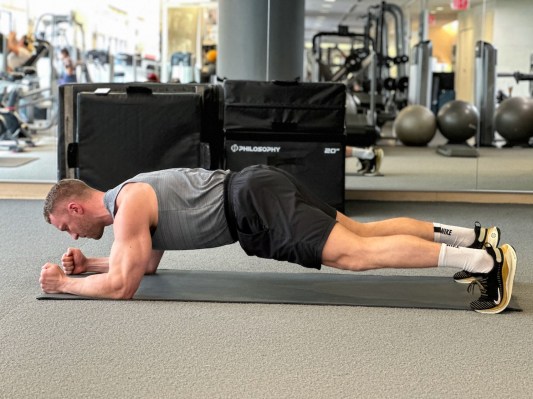
- Lie on your stomach with your forearms on the floor and your elbows directly beneath your shoulders. Keep your feet flexed with the bottoms of your toes on the floor. Ensure your elbows are parallel to each other.
- Engage your core by drawing your belly button toward your spine, tilt your pelvis slightly, and contract your glutes. Press into your forearms and rise up on your toes. Keep your neck in a neutral position, ensuring your head and spine form a straight line. Avoid letting your hips sink.
- Hold this position for a comfortable duration, keeping your glutes and abdomen engaged throughout.
Adjust your reps and sets based on your level.
- Beginner: One to two sets; hold for 15 to 30 seconds each
- Intermediate: Three sets; hold for 31 to 60 seconds each
- Advanced: Four sets; hold for 61 to 120 seconds each
Muscles worked
“While the plank is known for its core-strengthening benefits, it’s important to recognize that it’s not solely a core exercise,” Bauer says. “Instead, it can be viewed as a comprehensive full-body stabilization exercise.”
These are the muscles that are worked during a plank, according to Bauer.
- Rectus abdominis: This is the front abdominal muscle that runs vertically along the front of your torso. It helps to stabilize your spine and flex your trunk.
- Transverse abdominis: This is a deep-lying muscle that wraps around your abdomen. It acts as a stabilizer for your core and helps maintain abdominal pressure.
- Internal and external obliques: These muscles are located on the sides of your abdomen. They help with rotational movements and side bending, giving you stability and support.
- Erector spinae: These muscles run along your spine and help maintain proper spinal alignment and stability.
- Multifidus: These small muscles located along the spine provide support and stability to the vertebral column.
- Quadriceps: The front thigh muscles are engaged to help maintain leg extension (straight knees) and support your body’s weight.
- Shoulder Stabilizers: The muscles around your shoulders and shoulder blades (such as the deltoids, trapezius, and serratus anterior) work to stabilize your upper body and prevent your shoulders from collapsing.
- Gluteal Muscles: Your glutes, particularly the gluteus maximus, help to stabilize your pelvis and prevent excessive sagging of your hips during the plank.
Pros
You can do planks anywhere to strengthen a wide variety of muscles—no matter what level you’re starting at. “They’re great for beginners and those who are more advanced,” Kravchenko says.
Regularly practicing planks can also improve your posture by strengthening the muscles that support the spine. “This can reduce the risk of back pain and promote better alignment,” Bauer says.
Plus, planks are a low-impact exercise that put minimal stress on your joints, which makes them a great choice if you have joint issues or injuries.
Cons
Plans aren’t right for everyone, including those with existing shoulder, wrist, or back issues who may find planks uncomfortable or risky. “Modifications or alternative exercises may be needed for those with specific limitations,” Bauer says.
Plus, even though you can mix things up by trying variations like side planks and planks with leg lifts, you may still find the “holding” element exhausting from a mindset perspective. “It can be mentally challenging to maintain one position for a long time while maintaining good form,” Kravchenko says.
Finally, if you’re looking to specifically build your six-pack muscles, planks aren’t the best choice because they don’t involve direct resistance for your abdominal muscles.
You can do planks anywhere to strengthen a wide variety of muscles—no matter what level you’re starting at.
The bottom line
Both planks and crunches are effective strengthening exercises. However, a plank may be better for overall core stability and posture, while crunches are best for targeting your abs specifically.
That said, you don’t have to choose one over the other. If you don’t have limitations like back pain, you can work both into your workout by alternating between days: Perform planks one day and crunches another day to allow enough rest for targeted muscles. Pay attention to maintaining proper form for both move and always listen to your body.
If you experience pain or discomfort, talk with a trainer for guidance—or check with your doctor if it’s related to an underlying condition.
What's Your Reaction?



















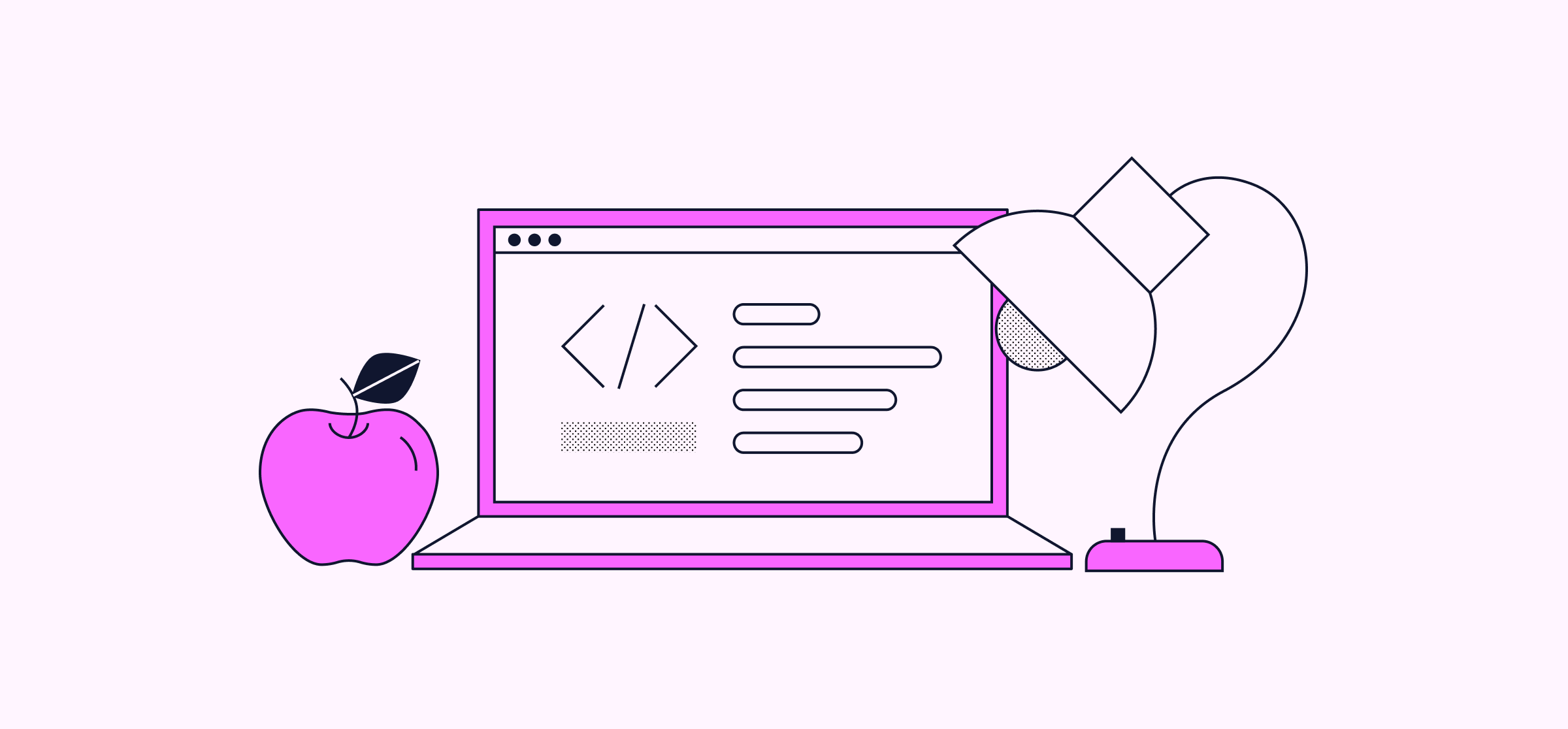

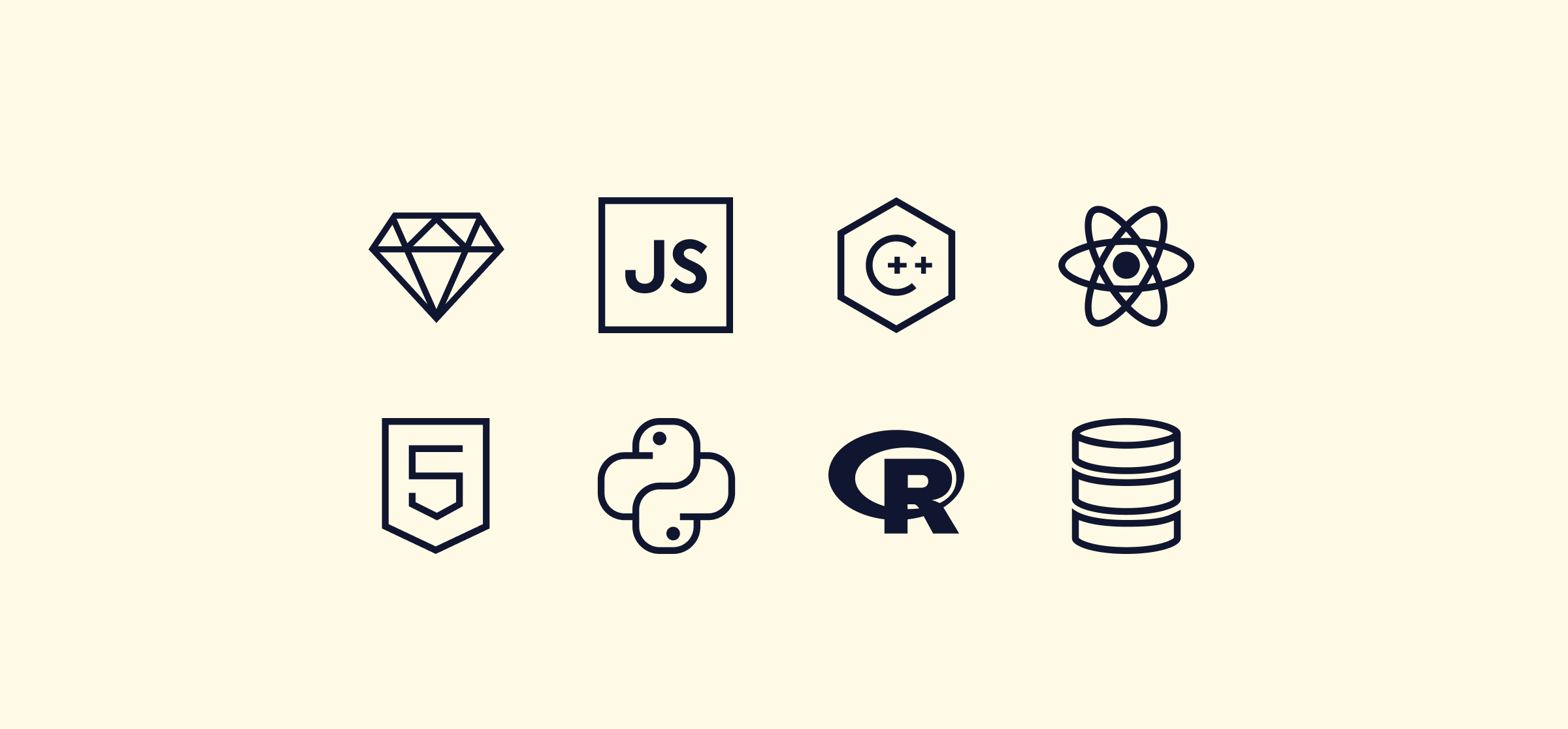


















.png)










































